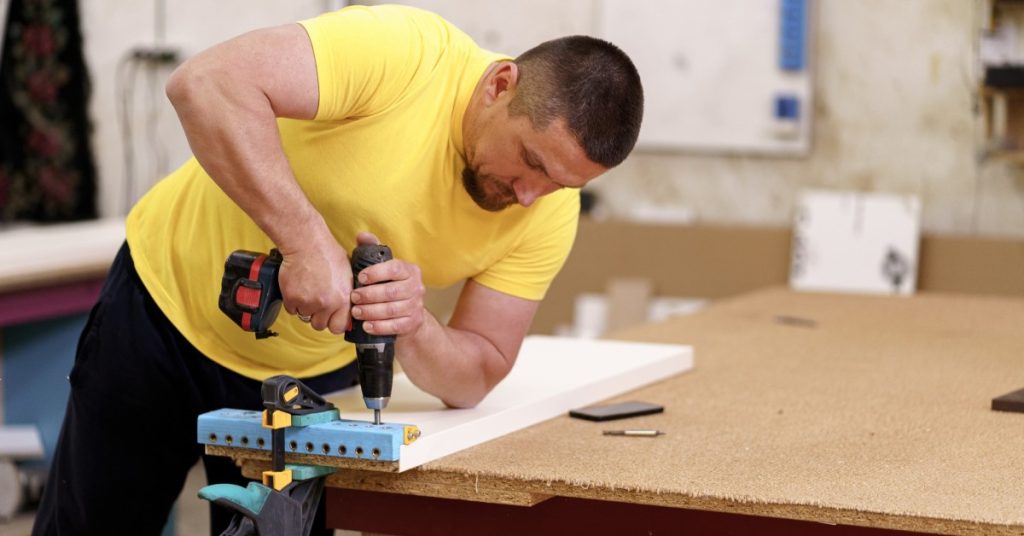Your presence here shows that you want to know Can You Cut Polycarbonate with a Table Saw?
Well!
You’re on right place because we already have worked for you. Polycarbonate is a versatile and durable material commonly used in various DIY and industrial applications.
If you’re working with polycarbonate sheets, you might be wondering if you can cut them using a table saw. In this comprehensive guide, we will explore the ins and outs of cutting polycarbonate with a table saw.
We’ll discuss the equipment, safety precautions, and step-by-step instructions to help you achieve clean and precise cuts.
Section 1: Understanding Polycarbonate
Before we delve into the specifics of cutting polycarbonate with a table saw, it’s essential to understand the material itself.
1.1 What is Polycarbonate?
Polycarbonate is a transparent thermoplastic material known for its exceptional strength, impact resistance, and optical clarity. It is often used as an alternative to glass due to its lightweight nature and high durability.
Polycarbonate sheets can be found in various thicknesses, making them suitable for a wide range of applications, including windows, skylights, greenhouse panels, and more.
1.2 Types of Polycarbonate Sheets
There are different types of polycarbonate sheets available, including:
- Solid Polycarbonate: This type is rigid and used for applications requiring structural strength.
- Multiwall Polycarbonate: These sheets have multiple layers, providing improved insulation and UV protection.
- Embossed Polycarbonate: Textured surface for light diffusion and privacy.
Understanding the type of polycarbonate you are working with will help determine the best cutting methods.
Section 2: Safety Precautions
Working with any type of machinery, including a table saw, requires strict adherence to safety precautions. When cutting polycarbonate, the following safety measures are crucial:
2.1 Personal Protective Equipment (PPE)
Wearing the appropriate PPE is a must when cutting polycarbonate. Ensure you have:
- Safety goggles to protect your eyes from debris.
- Hearing protection to guard against noise.
- Dust mask to avoid inhaling fine particles.
- Long-sleeved clothing and gloves to protect your skin.
2.2 Proper Ventilation
Polycarbonate cutting generates dust and fumes, so ensure proper ventilation or work in a well-ventilated area to avoid inhaling harmful particles.
2.3 Stabilization and Clamping
Stabilize the polycarbonate sheet securely before cutting. Clamps or adhesive tape can be used to prevent movement and minimize the risk of accidents.
2.4 Blade Choice
Use a fine-toothed blade designed for cutting plastics. Avoid blades designed for wood or metal as they can cause chipping or melting of the polycarbonate.
Section 3: Cutting Polycarbonate with a Table Saw
Now that you are familiar with polycarbonate and safety precautions let’s dive into the process of cutting polycarbonate with a table saw.
3.1 Set Up the Table Saw
- Ensure the table saw is on a stable surface.
- Install a fine-toothed carbide-tipped saw blade designed for plastics.
- Adjust the blade’s height, making sure it extends about 1/8 inch above the thickness of the polycarbonate sheet.
3.2 Mark Your Cut Line
Measure and mark the cutting line on the polycarbonate sheet using a pencil or a marker. Ensure the line is clear and straight to achieve precise cuts.
3.3 Secure the Polycarbonate
Use clamps or adhesive tape to secure the polycarbonate sheet to the table saw’s work surface. This prevents any movement during the cutting process.
3.4 Start Cutting
Turn on the table saw and allow it to reach its full speed before making contact with the polycarbonate. Feed the sheet slowly and steadily, applying minimal pressure to avoid chipping or melting. Be sure to maintain a steady pace throughout the cut.
3.5 Cooling the Blade
Cutting polycarbonate generates heat. To prevent the material from melting and sticking to the blade, consider using a blade coolant or simply stop periodically to allow the blade to cool down.
3.6 Post-Cutting Measures
Once the cut is complete, turn off the table saw and wait for the blade to come to a complete stop before removing the polycarbonate sheet. Carefully inspect the cut for any imperfections or rough edges.
Section 4: Additional Tips
4.1 Deburring
To smoothen the edges of your cut, you may need to deburr the polycarbonate. This can be done using a fine-grit sandpaper or a deburring tool.
4.2 Practice Cuts
If you’re new to cutting polycarbonate, it’s a good idea to practice on a scrap piece to get a feel for the process before tackling your main project.
4.3 Consider Alternative Tools
While a table saw is suitable for cutting straight lines, you may want to consider alternative tools like a circular saw, jigsaw, or a router for curved cuts or intricate designs.
Conclusion – Can You Cut Polycarbonate with a Table Saw?
In summary, cutting polycarbonate with a table saw is indeed possible, provided you follow the appropriate safety precautions and use the right blade.
Understanding the type of polycarbonate you’re working with and the specific project requirements will help you achieve clean and precise cuts.
Always prioritize safety and take your time to ensure the best results when working with this versatile material.


